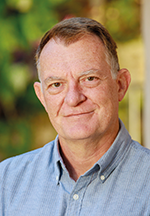

Recently I was sitting, rather uncomfortably, watching the display on my phone showing me that I was at an altitude of around 8300 m above sea level and travelling at a speed of 911 km/h between Johannesburg and Durban. Being pitch dark outside, I had no visual reference of where I was or how fast I was travelling, save for the marvel of technology I was holding in my hand. Together with the speed and altitude readings, it also indicated that I was headed in almost an exactly south-east direction, and it had readouts of trip distance and maximum and average speeds.
GNSS and its subset, GPS, have become synonymous with everyday life. No longer do we wonder how to get from point A to point B, even if we have never been to point B before. We simply take out our smartphone and access whichever navigation application we are comfortable with, then ask it to choose the route and guide us to our destination. And it does so with aplomb, routing us around areas of high traffic, bypassing unpaved roads and, if we choose, toll roads; sometimes guiding us through dodgy areas, to finally arrive at the destination in the quickest possible time. Using map books have, by and large, become a thing of the past, although my somewhat battered Southern African map book still finds a home in the boot of my car, just in case. You never know when you cannot access the GNSS signal, and, as my son can attest to, the three most important things in modern day lives are Wi-Fi, battery life, and food (usually in that order for most teenagers).
Most people have forgotten the ‘dark ages’, prior to 2000, when GPS systems were not accurate, not because they were inherently poor, but because of a feature called selective availability. This feature allowed military personnel and equipment to utilise a very accurate position, while commercial use had a specific error introduced, allowing for positioning to be accurate only to within 100 m (compared to military’s 10 m). But in 2000, the then-president of the USA, Bill Clinton, ordered the selective availability feature to be switched off, opening a raft of commercialisation that has grown exponentially in the following 20 years.
Despite positioning, many people do not realise the widespread use of GPS signals. All telecommunications systems, and indeed the internet, rely on the highly accurate clocks that exist on the orbiting satellites. This allows ground-based systems to have their clocks and data synchronised, helping data to flow efficiently.
Much of modern-day farming equipment relies on GNSS data for ploughing fields, planting crops, and future planning – many farming vehicles are now able to drive and perform these functions autonomously, thanks to GNSS.
Because GPS is ‘owned and governed’ by the US military, the GNSS now comprises multiple constellations as more countries have come on board to launch and manage their own satellite navigation systems. Russia has GLONASS, China has BeiDou, and Galileo is operated by the European Union. Most modern GNSS receivers, like those embedded in modern smartphones, can receive signals from all these constellations. This has provided more accurate and precise navigation, with accuracy down to 3 m being commonplace.
My thoughts then drifted to the new navigation kid on the block, Ultra Wideband (UWB), with its technology that delivers precise positioning with an accuracy measured in centimetres. More devices are being launched with UWB technology built-in, and once this becomes mainstream, it will launch brand-new commercialisation prospects. Misplacing devices will be a thing of the past. Personal trackers will be smaller, utilising less power. Warehousing will be completely revamped. The shopping centre experience will be turned on its head. Visit https://www.dataweek.co.za/19250r for a brief primer on UWB technology – it certainly promises to be a disruptive technology.
| Tel: | +27 11 543 5800 |
| Email: | [email protected] |
| www: | www.technews.co.za |
| Articles: | More information and articles about Technews Publishing |

© Technews Publishing (Pty) Ltd | All Rights Reserved